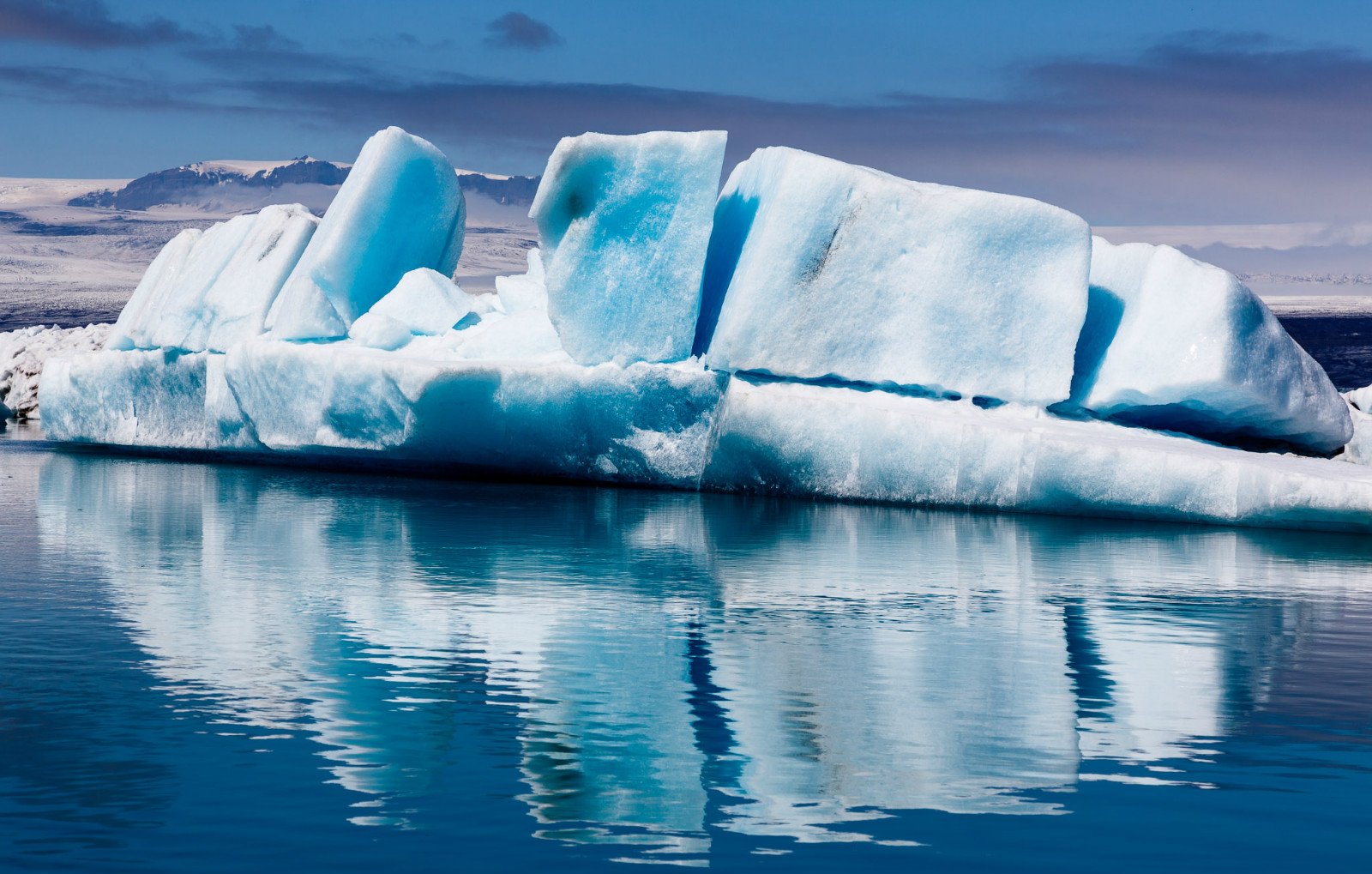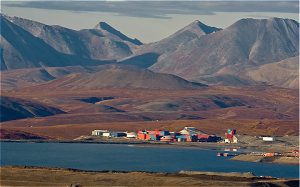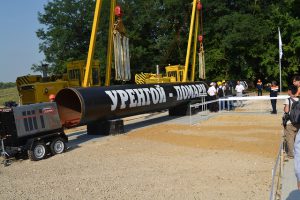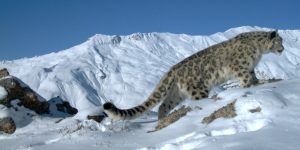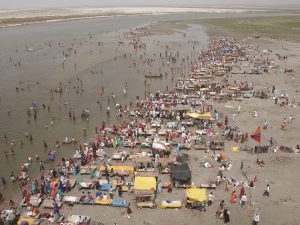Climate change is warming the Arctic and, with it, is opening up the region to other mounting pressures, such as the increasing exploitation of natural resources. These include oil and gas, which, when burnt, will add to the greenhouse gases (GHGs) in the atmosphere that are a such a big threat to the region and the planet as a whole. Indigenous peoples and ecosystems in the Arctic already facing up to climate change are now also being threatened by new and greater dangers.
A recent decision by Anglo-Dutch oil and gas producer Shell to shelve plans for drilling in the Chukchi Sea near Alaska was viewed as a major victory by environmentalists, who have long campaigned against the company’s plans to drill in one of the world’s most environmentally sensitive areas. But the threat remains grave that other oil companies, as well as the mining and the shipping sectors, will exploit the region as the world — and the polar regions in particular — warms. Undeterred by Shell’s decision and the weakness in hydrocarbon prices, Italian oil firm Eni said last month it would invest US$5.5 billion in a project in the Norwegian Arctic.
The impact of climate change so far in the region is well documented. In Siberia, reindeer herders witness the tundra disappearing in front of their eyes as permafrost melts. Inuit hunters watch as the sea ice recedes into the ocean, changing the behaviour of seals and other animals. The indigenous Sámi people say their traditional calendar is now out of sync – they cannot predict the weather anymore.
Arctic regions, including boreal ecosystems, are moving to a ‘new normal’. The future is filled with risks to nature and infrastructure, as well as Arctic peoples. Unpredictability is becoming the norm with climate change viewed as a serious threat to over 21,000 endemic Arctic species. An increase in global average temperatures of 2C, a threshold agreed at the Copenhagen climate summit in 2009 and is looking increasingly out of reach, would mean irreversible changes in the polar regions.
In the Arctic, the changes are already very apparent, with the sea level having risen by about 8 cm since the mid-2000s. Further changes to the Greenland Ice Sheet, combined with the extended melt of permafrost, would likely result in massive releases of methane, a potent greenhouse gas (GHG). Thus, what happens in the Arctic will play a major role in the future of the Earth’s weather. What happens at the top of the world has already been likened to a canary in the mine for the global climate.
Climate risks in the Arctic range from the release of chemical waste from sediment and nuclear reactors that have been dumped in the ocean, to floods that would damage the nuclear battery lighthouses along the Northern Sea Route. The opening of new sources of oil and gas pose environmental threats to a region often untouched by such industries.
A serious incident last year provides a telling example of the potential risks. in November 2014, winds picked up around the oil tanker M/T Triathlon in anchor in a North-eastern fjord in Norway. Within 30 minutes the winds shifted from to 35 metres per second (m/s) from 17 m/s, causing the anchor to fail and the ship to drift towards coastal cliffs. A catastrophe was prevented at the last minute, but the risk was huge. A proper clean-up of oil spills cannot be carried out amidst polar ice, and only Russia, a regional superpower, has a fleet big enough to provide for basic services in the event of oil or industrial spills.
The Arctic Council has long acknowledged the competing interests and priorities of countries and peoples in the region. The 2004 Arctic Climate Impact Assessment has pointed out: “Whether a particular impact is perceived as negative or positive often depends on one’s interests”. Therefore, the report said, a reduction in sea ice is likely to have grave consequences for polar bears, seals and local people dependent on these animals as a food source. However, to other interests, a reduction in sea ice could increase marine access to resources, “expanding opportunities for shipping and possibly for offshore oil extraction”.
Feedback loop
Some parts of the Arctic have been exploited as a source of minerals, oil and gas and hydropower for decades. In many cases, these actions have devastated indigenous homelands, such as the Khanty lands in Siberia, and left a legacy yet to be tackled or rehabilitated. The melting ice unlocks new flows of previously inaccessible natural resources such as oil, the burning of which further warms the climate and worsens the impacts. Again, it will be remote local communities that will bear the brunt of these changes.
New access to the Northern Sea Route has triggered geopolitical ambitions. Russia has claimed sovereignty all the way to the North Pole, claiming 1.3 million square kilometres of territory. The world’s largest country by land mass sees the Arctic as a ‘domestic, secure zone’ to be defended against outside interests. Siberian oil and natural gas provide much-needed revenue and one fifth of Russia’s current GDP, although weaker global prices and western sanctions have eroded the overall cashflow from hydrocarbons.
China’s interest grows
New pipelines proposed by Gazprom, Shell and E.ON would impact the Arctic and boreal regions as gas would be sourced from the region. Environmental impact assessment talks are already underway and EU Commissioner Maroš Šefčovič was amongst the first to express concern over the pipeline plans.
As frozen ground thaws, climate change will also have a majorly detrimental impact on infrastructure in the Arctic region, as well as for indigenous peoples.
As Russia attempts to sustain its traditional stranglehold over the region, China has emerged as a challenger to this hegemony, although the east Asian giant has no official Arctic strategy.
Yet China already has a major interest in the region, which revolve around potential transport corridors, energy supplies and fisheries.
